When I visit Karachi or see it through the visual media, I am in awe of the urban centre it has become. Alas, it barely has any remnants of the place I remember from my youth, but then I suppose no major city really has stayed the same since the 1960s. Though always a busy urban centre, the sea of humanity and the conditions of the city itself today are a far cry from what existed even post-partition. Admittedly, many of us still think and look back at old Karachi through rose-tinted glasses, but one cannot ignore how, despite multiple efforts, years of politics have taken its toll.
As a foreigner now, for me Karachi will always exist in that time loop between the 1960s and the early 70s. For our extended family which moved there during the time of Partition, Karachi served as what was supposed to be the final destination; the forever home. For my family who eventually moved back in the 1960s from Australia, the port was and would always be the gateway to the grand nation of Pakistan.
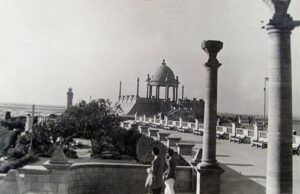
A more recently coined term, ‘third culture’ kids, refers to those who grew up in a culture different from the one in which their parents grew up. For our families or tribes, generations of moving from one city or country to another, rendered us with multiple generations who felt this way. Eventually, for our parents, this created a deep generational longing for belonging. Our grandparents were passionate and active supporters of the Pakistan Movement, especially since it was a concept of the first nation built on Islamic principles. Pakistan was the haven that they had all been waiting for.
My parents belonged to that generation of ‘Muhajirs’ who came to this country as young adults. They then married and gave birth to the first generation of Pakistani-born children. My father, who worked for the government of Pakistan, was transferred to Australia, in the late 1950s. My two sisters and I were thus raised in the new city of Canberra, Australia.
Canberra was founded in 1913 and, was more of a small town compared to Karachi, which by then had already been inhabited for over 330 years. To get a better perspective, Canberra in 1960 had a population of about 50,000 people, whereas Karachi was nearing 1.9 million. But I digress… even though we lived thousands of kilometres away, we were raised with a passionate fervour and love for Pakistan, a country we then barely remembered. We constantly saw Pakistan through our parents’ eyes; the land that they and their generation risked their lives for. And we always remembered, and were able to celebrate our love for Pakistan through the multiple national and religious holidays we enjoyed with the small Pakistani population ‘down under.’
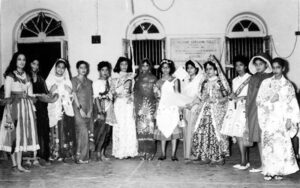
Life in Canberra, looking back, was truly an ideal, almost surreal life. We were being raised in a typical ‘small town’ life. However, our mother had a laser focus on female independence and educational ambition. Canberra really embodied the classic style of “Leave it To Beaver,” albeit the Australian version. Years later, as I, the eldest of three sisters, approached my teenage years, my forward-thinking, but conservative, mother decided it was time to go back ‘home.’ We were the only non-Caucasians in our school — not that we really noticed; however, culturally, our mother decided that we three girls needed to head back ‘home’ and mature in an environment more in consonance with our cultural and religious identity. I can still remember the day my best friend went on her first date; my mother turned to my father and said, “Mian, it is time.” Up till that day, our lives had been very similar to the lives of our friends, but dating was where the line was drawn.
Heading back was exciting, as well as daunting, as the journey in the 1960s from Australia to Pakistan was long. We were now leaving our charming neighbourhood, with its bungalow houses and flower-filled gardens, to return to the bustling metropolis, with its eclectic mix of the old and the new, as a backdrop to an urban scape that never slept.
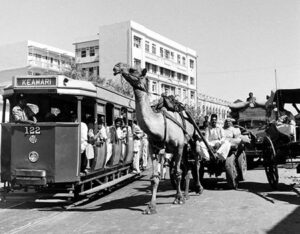
As we descended from the plane, we were immediately (and to our shock and surprise) engulfed by a sea of relatives who had come to greet us on the tarmac itself. We were drowned in garlands, hugs and duas with excitement and we felt love everywhere. The smell of jasmine and rose intermingled with the characteristic Karachi smell of burning wood and charcoal; stark contrasts to what we were accustomed to. What a wonderful time that was; no security gates, no waiting for the tunnels to connect to the plane, no glass barriers; just a big, warm welcome by those who we actually shared familial ties with.
Adapting to life in our new home and city naturally took adjustment. For one, there were always people coming in and out of the house. A continuous parade of people came to work in the house, besides the servants who lived on site. Gone were the washing machine and the dishwasher; instead we now had the dhobi, the jamadaar, and the maasi. Milk was delivered by the milkman, but instead of pre-filled glass bottles, we now required someone to go out with a large pot into which milk would be then carefully measured. It was a life filled with simple pleasures.
There was almost a daily gathering of people as relatives and friends visited often, and they did not wait for an invitation nor bother to let one know of their imminent visit ahead of time. We were related, whether by blood or association, and so a welcome was assured. By comparison, our lives in Australia, where we had large gatherings a few times each year, had been far quieter.
Beyond visitors, we also looked forward to the daily comings of children or the neighbours’ servants, who brought trays of food to share. If anyone was cooking a dish that required a lot of time or preparation, it was a custom to cook extra so that they could share it with those who lived around them. We would be delighted to receive haleem, nihari, paye or kheer and then debate who in the neighbourhood made the best version of the dish. It was with both pride and love that these dishes were sent, and you knew everyone who lived up and down your street and their business.
Food was also the ultimate harbinger of news of any event that merited commemoration, as every celebration was conveyed to all, accompanied by a box or plate of mithai. Due to the number of relatives we had and the size of our social circle, it seemed there was almost always a marriage, an engagement, a birth, a Bismillah or an Aameen taking place. One of the biggest changes we had to acclimatize to was that there was so much activity within the greater family itself, that socialising with ‘friends’ almost became an anomaly; we socialised with cousins regardless of the age group, instead of gravitating towards families with children of a similar age. Gone were our ‘Aunties,’ and we now had actual Khalas, Phuppos, Chachis and Tais.
But that was life in Karachi, a life that assailed your emotions and senses in every way. The sights, the sounds, the smells and tastes. Wherever you looked, you were surrounded by colour; in the hues of the clothes that you wore; in the food, the flowers, the carts selling everything you could imagine; the trucks painted with beautiful pictures of northern Pakistan; the wedding marquees and the glass bangles worn by all the girls. That much hasn’t changed in the decades since. However, in the 1960s, colour was also accompanied by unusual sites like beautiful horse-drawn carriages, tongas, and their more upscale versions known as the Victorias. As an adolescent, the tongas always inspired thoughts of excitement and adventure, as we were never allowed to ride them. There were other carts drawn by donkeys, camels and oxen as well. The roads were always a melee of both humans and animals and trying to navigate through them was never easy.
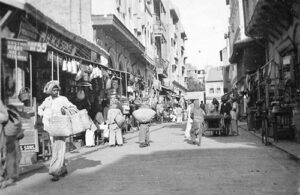
Another change was that every morning we were awoken by the azaan, or the morning call to prayer. The muezzins from many nearby mosques rendered their calls in every voice range, and depending on where one lived and how many mosques existed in one’s vicinity, they together would harmonise and create a chorus to wake up to. Soon after, amidst the sounds of the roosters and incessant cawing of crows, the cries of the vegetable-sellers with their heavily laden carts or fish-sellers on their bikes would be heard as they passed by on the street and the servants would go out to make the purchases of the day. All day long, merchants would be passing down the road calling out the wonders of their ware or their services. From men who bought your old newspapers, bottles and tins, to those who tempted youngsters with fresh slices of coconut in exchange for any old metal lying around the house. Craftsmen would pass by offering to reweave the charpoys that were found in every home to standard veranda furnishing that were used to sleep under the stars on summer nights.
It was fascinating to see and hear all this from behind the safety of our compound walls. The intimidating world that was beyond the shelter of our home was a far cry from the quiet Australian neighbourhood we were raised in; where our family never worried about our safety and where we could easily jump on our bikes to go blazing down many a path satisfying our curiosity through forests and suburb alike. Now, we were faced with a cacophony of continuous sounds and movement that prevented our ability to venture freely; instead, we had to wait for a car — and an adult to accompany us — in order to go anywhere. From our windows, we were enthralled by the action and the goings-on in this truly awe-inspiring world, but again from a distance, at least, until we were older. Our adventure of getting to experience and know Pakistan ourselves had only just begun.
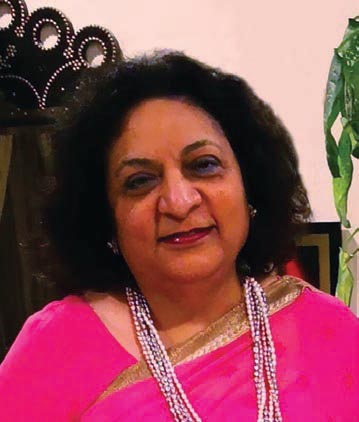
The writer is a Kuwait-based Pakistani educationist, who has passed on her love for science to generations of youth and inspired many to take up the study of environmental science.



